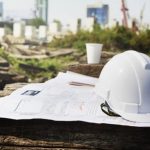Safety in construction is of paramount importance as it involves high-risk activities and hazardous environments. Prioritizing safety helps prevent accidents, injuries, and even fatalities among construction workers and ensures that projects are completed efficiently and on schedule. Here are some essential aspects of safety in construction:
Training and Education
Providing comprehensive safety training to all construction workers is crucial. This includes educating them about potential hazards, proper use of equipment, and best practices for staying safe on the job site. Regular safety updates and refresher courses are essential to keep safety protocols fresh in workers’ minds.
Personal Protective Equipment (PPE)
Construction workers should be equipped with appropriate PPE, such as hard hats, safety goggles, gloves, steel-toed boots, and high-visibility vests. Ensuring workers wear their PPE correctly helps protect them from various job site hazards.
Hazard Identification and Risk Assessment
Conducting thorough risk assessments before starting a project can help identify potential hazards and develop strategies to mitigate them. Regular inspections throughout the project’s duration can help address new or evolving risks.
Safe Use of Tools and Equipment
Proper maintenance and inspection of construction tools and equipment are essential to ensure they are in good working condition. Workers should be trained in the safe operation of these tools to prevent accidents and injuries.
Fall Protection
Falls are a leading cause of injuries and fatalities in the construction industry. Implementing fall protection measures, such as guardrails, safety nets, and harnesses, is critical, especially when working at heights.
Scaffolding Safety
Properly erected and secured scaffolding is crucial for the safety of workers working above the ground. Regular inspections and compliance with safety standards are essential for scaffolding safety.
Electrical Safety
Electrical hazards are prevalent on construction sites. Workers should be trained in electrical safety, and electrical systems must be installed and maintained by qualified professionals.
Fire Safety
Construction sites are susceptible to fire hazards. Adequate fire prevention measures, fire extinguishers, and an emergency response plan are necessary to minimize the risk of fires and ensure a swift response if one occurs.
Excavation and Trench Safety
Proper shoring, sloping, or trench box systems should be in place when workers are involved in excavation or trenching activities to prevent collapses and cave-ins.
Communication
Clear communication and coordination among workers, supervisors, and contractors are essential to ensure that everyone is aware of potential hazards and safety protocols.
Emergency Preparedness
An emergency response plan should be in place, and workers should be familiar with evacuation procedures and how to respond to accidents or injuries.
Health and Wellness
Ensuring workers’ health and wellness is also crucial for safety. Encouraging breaks, providing access to water and shade, and addressing workplace stress contribute to a safer work environment.
Safety Culture
Creating a strong safety culture within the construction company fosters a collective responsibility for safety. When safety is prioritized from top management down to every worker, it becomes an integral part of the company’s identity.
By consistently implementing safety measures and promoting a safety-conscious culture, construction companies can significantly reduce the number of accidents and injuries, making the work environment safer and more productive for everyone involved.


